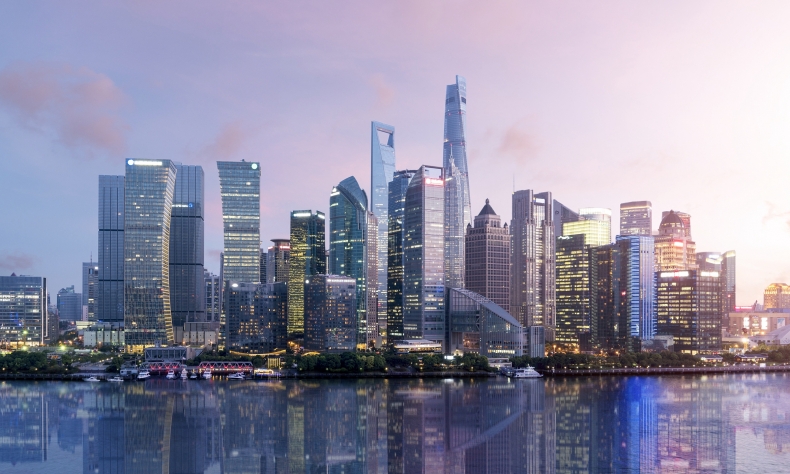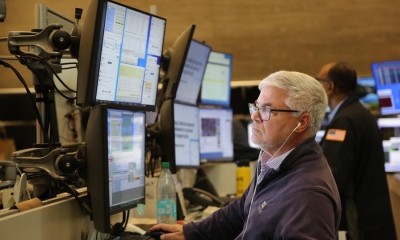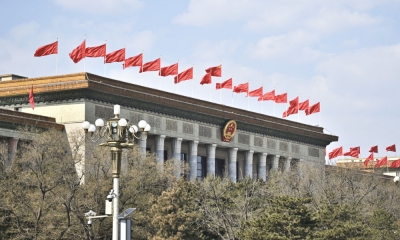Charting a Course for the Coming Years

China will be an exciting place to live and work over the next coming decades.
Shortly after the Spring Festival, China begins its annual “political season” with the convening of the Two Sessions, the session of the National People’s Congress (NPC) and that of the Chinese People’s Political Consultative Conference (CPPCC). This year both of these events have a very special significance. First, it will be the start of a new Five-Year Plan period, and secondly, this year marks the 100th anniversary of the founding of the Communist Party of China. This will be the source of a great deal of celebration throughout the year.
The Party and the Chinese people have every reason to celebrate. In 1921 China was still one of the poorest countries in the world and, in spite of the founding of a national government in 1912, it was still divided into a number of “fiefdoms” run largely by local warlords. Now China has become a country that is much more united and is the real engine of the world economy eliminating absolute poverty throughout the land. China has also become one of the major spacefaring nations of the world and is a leader in some major high-tech manufacturing areas like high-speed rail, 5G, and AI.
Those gathered at the Two Sessions are largely looking ahead, focusing on the coming year, the next five years, and the years leading up to the middle half of the 21st century, when China will celebrate the 100th anniversary of the founding of the People’s Republic of China. And while the recent decades’ development has been nothing short of breathtaking, the path forward is even more ambitious.
While the rapid development of China has caused concern among some Western countries, particularly after the tremendous economic slow-down caused by the coronavirus, with the West suffering more severe effects than China because of the slow and rather erratic responses of Western governments to the pandemic. China is now preparing to rely on its own resources to ensure its economic security, with its newly-developed policy of “dual circulation,” relying first and foremost on domestic consumption, while at the same time advancing its opening-up and still actively being engaged with other countries. The Chinese market is big enough – and growing – that it can move by and large on its own steam. In the long run, of course, China is dependent, as are all countries today, on the rest of the world. As a result, China is continuing to open-up its market to foreign businesses, which has proven very attractive to them.
The transportation revolution which has been a prime element in China’s growth over the last couple of decades is not over, now with the development of high-speed maglev trains, an area in which China may win its own niche, as it has with more conventional high-speed rail. With the increasing speed of human travel and transporting goods, the world is becoming smaller and more compact. As a result, China is now in the process of consolidating some of its multi-million populated cities into giant city clusters, with a concomitant growth in productivity and more convenience in the movement of goods and services which comes with it.
China is also making good on recovering from some of the environmental problems that were caused by the rapid development of the economy during the early days when China served as the low-wage manufacturing center of the world. The “mountains and rivers” are now in the process of recovering their pristine beauty and health, without imposing any major hardship on China’s workers and farmers. In addition to this, the miracle of scientific development and the country’s creative practices are playing leading roles in this process.
Innovation in science and technology is becoming the real driving force of the Chinese economy. In the West these days, if you close a coal plant, both the supply of energy and employment will suffer. In China they might just build a nuclear power station instead and provide more employment and more energy. As the population grows and consumption rises, so also does energy through-put. The key is the development of new resources through new scientific breakthroughs and the implementation in innovative technology. For instance, China’s own third-generation nuclear plants have been put into operation. It is also working on a fourth generation, the so-called fast breeder reactor, and is putting its money into developing thermonuclear fusion energy, which, when developed, will provide mankind with a virtually unlimited source of energy. The recent white paper on China’s science indicates that the entire country is gearing up for a grand scientific program similar to what the U.S. did with the Manhattan Project or the Apollo program.
Speaking of Apollo, China now has advanced its own presence on the Moon and will soon be on Mars. Judging from President Xi’s recent comments to representatives of the Chang’e-5 mission, China will be looking at exploring interstellar space. And these are not merely “prestige programs.” As Apollo has shown, every yuan spent on space will give payback to the civilian economy many times over in the form of those new technological innovations that increase the country’s productivity, health, and well-being.
China will be an exciting place to live and work over the next coming decades. This is witnessed by the interest it has attracted from individuals and companies around the world who wish to partake in this ambitious venture. And China’s example will be the perfect antidote that the world needs coming out of the COVID epidemic. Inspired by China’s example, eliminating poverty has now become a watchword for many developing countries. On all these issues and more, mankind can and must unite. For in a world which is becoming increasingly interconnected and interdependent, there are no “winners” or “losers.” It’s should be a win-win situation.
 Facebook
Facebook
 Twitter
Twitter
 Linkedin
Linkedin
 Google +
Google +







